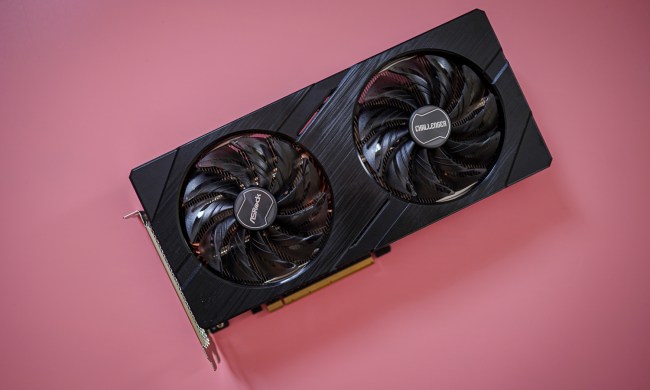Intel Arc Alchemist was just benchmarked by SiSoftware in a series of OpenCL benchmarks. Although the benchmarks are unofficial and don’t give a full overview of the card’s performance, they can serve as an indication of how well the entry-level Intel A380 will match up against AMD and Nvidia.
SiSoftware has also detailed the higher-ranked Arc Alchemist models. It looks like Intel will release its new discrete gaming GPUs in three tiers dubbed A300, A500, and A700.

The benchmarked Arc GPU in question is the entry-level Intel A380. SiSoftware used its own Sandra tool for testing, which is why these results should be taken with a small dose of skepticism and are more of an insight into how well the card may perform as opposed to a proper benchmark. SiSoftware also gives us more information about the GPU’s exact specs. However, the benchmark doesn’t divulge anything else about the system the card was tested with. All we know is that SiSoftware was using the 64-bit version of Windows 10 and the latest Intel graphics drivers, and that turbo mode was enabled in every test.
The A380 was put through a series of tests, and the results aren’t exactly surprising. This is going to be a budget GPU that SiSoftware speculates to be priced at $199, so the performance will match that of similar offerings from Nvidia and AMD. In some OpenCL tests, the Intel A380 showed similar numbers to the Nvidia GeForce RTX 3050 and GTX 1660 Ti, as well as the AMD Radeon RX 6500XT.
According to SiSoftware, the A380 runs on Intel’s DG2-128 GPU. The graphics card features 128 execution units (EUs), 1,024 shader processors (SP), 16 tensor cores, and has 6GB of memory with a speed of 14Gbps across a 96-bit memory bus. Compared to its benchmarked rivals, it seems to have the lowest power requirements, needing only 75 watts compared to the 130W TDP of Nvidia’s RTX 3050.

SiSoftware has also divulged more information about the other Intel Arc Alchemist GPUs. The A300 lineup represents the entry-level segment and all of the models run on the Intel DG-128 processor. The midrange A500 and higher-end A700 series graphics cards will all use the DG2-512 GPU.
Starting with the middle-of-the-pack A500 series, these GPUs will feature 384 EUs, 3,072 SPs, and will come with a huge memory increase over the entry-level GPU, boosting the memory size to 12GB across a 192-bit bus clocked at 16Gbps.
The A700 series will, once again, feature a performance jump that is rumored to bring it up to par with the Nvidia GeForce RTX 3070 Ti. The GPU will come with 512 execution units, 4,096 shader processors, and 16GB of GDDR6 memory with a 256-bit bus. The entire Arc Alchemist lineup has been confirmed by Intel to use TSMC’s N6 process node.
While this benchmark may not give us a true-to-life overview of the performance offered by this entry-level GPU, we may soon start seeing more accurate tests as we get closer to the launch date. Intel has recently teased that the desktop version of Arc Alchemist will be released in the second quarter of 2022.




